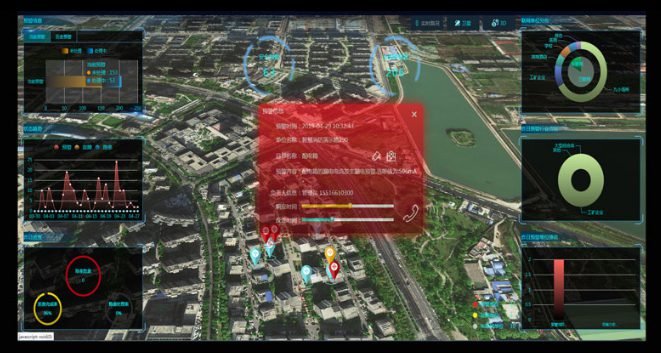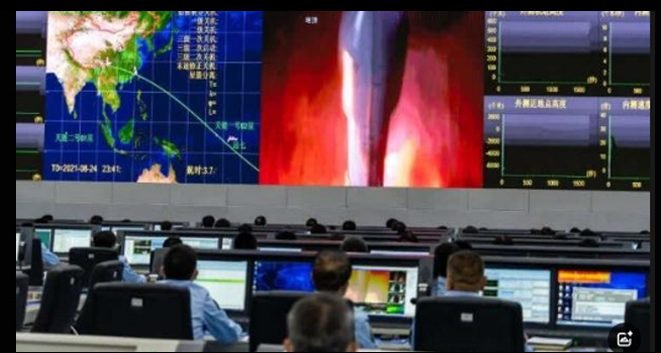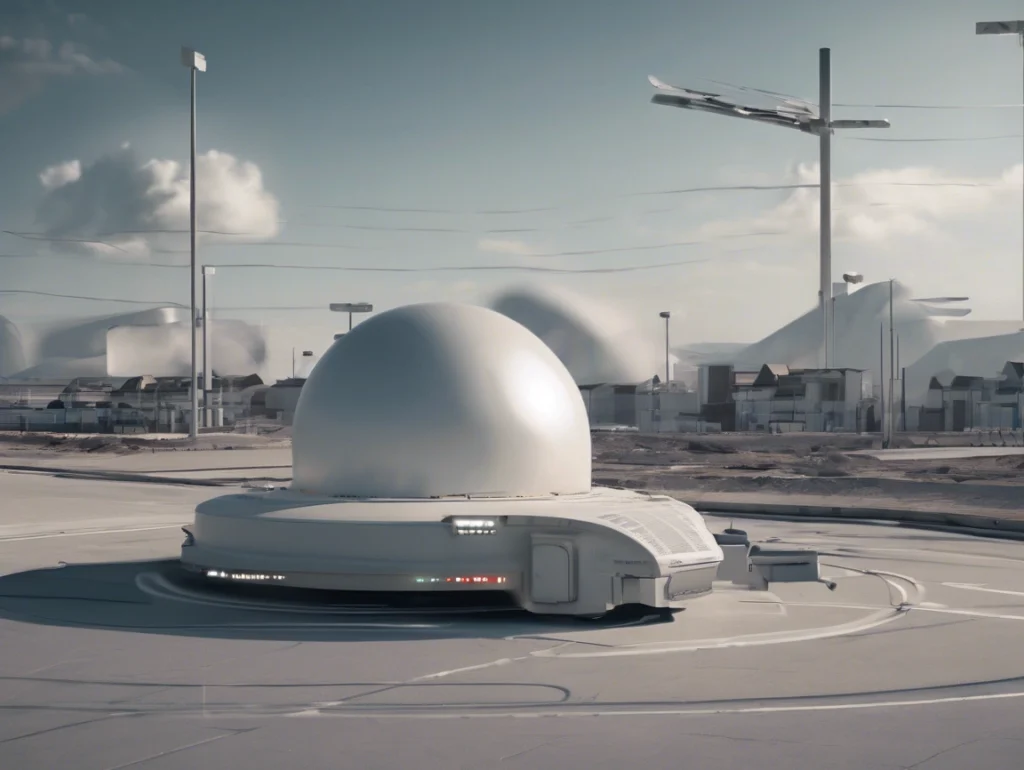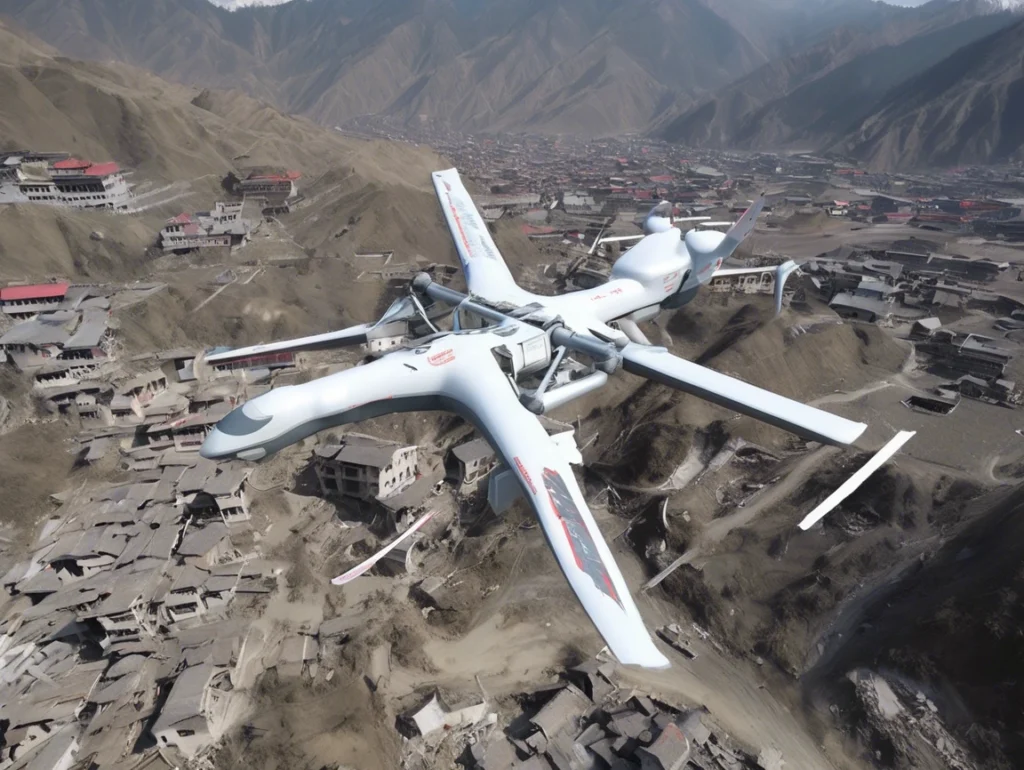
At present, with the rapid development of science and technology, the field of security prevention continues to usher in innovation and breakthroughs. Photoelectric warning system as a cutting-edge security technology, is gradually becoming a key force to ensure the safety of all kinds of places. It integrates advanced optical, electronic and information technology, like a keen “photoelectric eye”, always guarding our safety.

First, working principle: the exquisite collaboration of light and electricity
The core of the photoelectric alarm system is the comprehensive use of a variety of photoelectric sensing technologies to achieve all-round, no-dead monitoring and early warning. Its main working principle is based on the following key technologies:
(1) infrared thermal imaging technology
Any object whose temperature is above absolute zero radiates infrared rays. Infrared thermal imaging technology uses this property to capture the infrared emitted by the target object through the detector, and converts it into an electrical signal, which is processed to generate a thermal image. Objects at different temperatures show different shades of gray or color in the thermal image, allowing us to clearly distinguish the target. For example, in a dark environment, hot objects such as the human body and vehicles can be clearly displayed in the infrared thermal imaging screen, which is not limited by light conditions and realizes 24-hour uninterrupted monitoring.
(2) visible light imaging technology
The visible light imaging part uses high-definition cameras, which can provide high-resolution, colorful images when there is sufficient light. It can capture the detailed features of the target object, such as shape, color, texture, etc., which helps to accurately identify the target. Visible light imaging technology and infrared thermal imaging technology complement each other, in the daytime or good lighting environment, visible light imaging plays a leading role in providing clear and intuitive image information; At night or in poor light, infrared thermal imaging ensures continuity of monitoring.
(3) Laser ranging technology
In order to obtain the accurate distance information of the target object, the photoelectric peri-visual warning system is often equipped with a laser rangefinder. The laser rangefinder emits a laser beam, which is reflected back after encountering the target object and is received by the rangefinder. By measuring the time it takes the laser to travel back and forth, combined with the speed of light, the distance between the target and the system can be precisely calculated. This distance information is crucial for determining the target’s location, trajectory, and potential threat level. For example, in security monitoring, it can be found in time whether there is an object near the warning area according to the change of the target distance.
(4) Intelligent analysis algorithm
Through the built-in intelligent analysis algorithm, the system can process and analyze the infrared, visible image and laser ranging data. These algorithms can identify the type of target object (such as people, vehicles, animals, etc.), direction of movement, speed and other characteristics, and make judgments according to preset rules. Once an abnormal situation is found, such as personnel entering the warning area, vehicles staying in the no-stop area, etc., the system immediately triggers the alarm mechanism and sends alarm information to the relevant personnel to achieve fast and accurate early warning.
Second, system composition: the precision system of collaborative operation
The photoelectric warning system consists of several key components, which cooperate with each other to build an efficient security network.
(1) Front-end sensing equipment
Photoelectric turntable: As one of the core components of the system, photoelectric turntable integrates infrared thermal camera, visible light camera and laser rangefinder and other equipment. It is capable of flexible rotation in both horizontal and vertical directions to achieve 360° peri-visual monitoring. For example, some advanced photoelectric turntables use a dual-axis design, which can achieve continuous 360° rotation in the horizontal direction and a rotation range of -90 ° to + 90° in the vertical direction, ensuring no monitoring blind areas. At the same time, the photoelectric turntable has high-precision positioning and stable tracking performance, which can quickly lock and continuously track the target object.
Sensors: In addition to the equipment integrated on the photoelectric turntable, the system may also be equipped with other types of sensors, such as vibration sensors, microwave sensors, etc., to assist in the detection of the target object. The vibration sensor can sense the small vibration of the ground or the surface of the object, and when a person or a vehicle passes by, the vibration signal can be captured by the sensor. Microwave sensors use the reflection characteristics of microwave to detect the movement of objects in the warning area. These sensors cooperate with the photoelectric equipment to improve the detection and identification ability of the system to the target, and reduce the occurrence of false positives and missed positives.
(2) Data transmission
The data collected by the front-end sensing device needs to be transmitted to the back-end processing center for analysis and storage. The data transmission part mainly includes wired and wireless transmission two ways.
Wired transmission: The commonly used wired transmission media are optical fibers and network cables. Optical fiber has the advantages of fast transmission speed, large bandwidth, strong anti-interference ability, and can ensure the stable transmission of high-definition video and large amounts of data. In some places with high data transmission requirements and relatively fixed distances, such as military bases and perimeter prevention of important facilities, optical fiber transmission is widely used. Network cables are applicable to short-distance transmission scenarios where the amount of data is relatively small, and have low cost and easy installation.
Wireless transmission: For some scenarios where cabling is difficult or requires flexible deployment, wireless transmission plays an important role. Common wireless transmission technologies include Wi-Fi, 4G/5G, etc. Wi-Fi is suitable for short-range, small-area wireless coverage, such as monitoring inside buildings. 4G/5G network has the advantages of wide coverage and fast transmission speed, and can achieve remote and real-time data transmission. For example, in areas where wired networks are difficult to reach such as wild areas and mountains, through 4G/5G wireless modules, the photoelectric weekly warning system can transmit the collected data to the monitoring center in real time to ensure the continuity and timeliness of monitoring.
(3) Back-end processing center
Data processing unit: responsible for summarizing, analyzing and processing all kinds of data transmitted from the front end. The data processing unit adopts high-performance computer and professional image processing and analysis software, and uses intelligent algorithms to carry out target recognition and behavior analysis of images. For example, through the analysis of the continuous frame image, it can judge whether the movement trajectory of the target object is abnormal and whether it conforms to the preset alarm rules. At the same time, the data processing unit can also process the laser ranging data, calculate the distance change of the target object, and provide an accurate basis for early warning.
Storage device: Used to store a large number of images, videos, and data collected by the system. Storage devices usually have large capacity and high reliability, and can meet the requirements of long-term, high-resolution image and video storage. Common storage devices include disk arrays and network storage servers. These storage devices can not only be used for post-query and traceability, but also provide data support for intelligent analysis of the system, and continuously optimize the detection and early warning performance of the system through the analysis of historical data.
Monitoring display terminal: The processed data is presented to the operator in an intuitive form. The monitoring display terminal usually uses a large-screen display or multi-screen display system, which can display multiple monitoring screens at the same time, and display the position, status, alarm information of the target object in real time. The operator can remotely control the system through the monitoring display terminal, such as adjusting the Angle of the photoelectric turntable, setting alarm parameters, etc., to realize the comprehensive monitoring and management of the warning area.




Application: All-round security
With its excellent performance, photoelectric peri-visual warning system has been widely used in many fields, and plays an important role in ensuring security.
(1) Military field
Military base security: As an important military facility, military base security is very important. The photoelectric perimeter warning system can be deployed around the military base to carry out real-time monitoring of personnel, vehicles, aircraft and other targets around the base. Once an unauthorized target is found to be approaching or breaking in, the system immediately issues an alarm, notifying security personnel to take corresponding measures to effectively prevent enemy reconnaissance, infiltration and attack threats.
Border defense: In the border area, the terrain is complex and the environment is harsh, and the traditional security means are difficult to meet the needs. The photoelectric peri-visual warning system can adapt to various complex environments and realize 24-hour uninterrupted monitoring of the border line. Through real-time monitoring of border areas, illegal border crossings can be detected in a timely manner, providing strong support for border control and safeguarding national territorial security and border stability.
(2) Civil security
Protection of important facilities: For important infrastructure such as airports, ports, electric power facilities, communication base stations, financial institutions and so on, the photoelectric perimeter warning system can provide a full range of security protection. It can monitor the situation around the facility in real time, find potential security threats in time, such as personnel intrusion, theft, sabotage and other behaviors, and quickly alarm to ensure the normal operation of important facilities and the stable development of the national economy.
Residential area security: With the improvement of people’s safety requirements for the living environment, the application of photoelectric weekly warning system in residential areas is also more and more extensive. It can be installed in key locations such as the perimeter walls, entrances and exits, and parking lots of the community to monitor personnel and vehicles in the community. When a suspicious person or vehicle enters the community, the system automatically alarms and reminds the property management personnel to deal with it, effectively improving the security of the residential community and creating a safe and comfortable living environment for residents.
(3) Industrial field
Oil fields, mines and other large enterprises security: oil fields, mines and other industrial enterprises usually occupy a large area, the surrounding environment is complex, there is a high security risk. The photoelectric weekly warning system can comprehensively monitor the production areas, warehouses, oil pipelines and other important parts of these enterprises to prevent theft, destruction and other behaviors. At the same time, the system can also be combined with the production management system of the enterprise to achieve real-time monitoring and safety early warning of the production process to ensure the safety of the enterprise.
Industrial park perimeter prevention: there are many enterprises in the industrial park, and personnel and vehicles flow frequently. The photoelectric perimeter warning system can effectively prevent the perimeter of the industrial park, and maintain the normal order of the park by monitoring and managing the personnel and vehicles entering and leaving the park, and ensure the property safety of enterprises and the personal safety of employees.
Discover more from SHENZHEN LEISHI SENSING OPTOELECTRONICS CO., LTD.
Subscribe to get the latest posts sent to your email.






